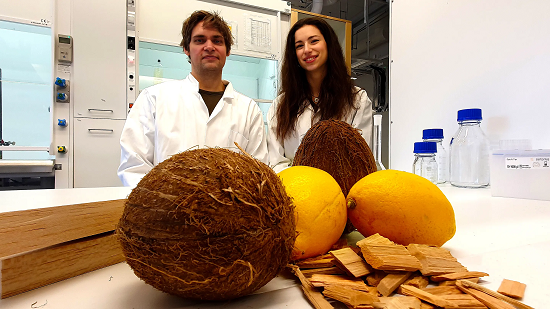 Friday, September 27, 2024
Friday, September 27, 2024  Friday, September 27, 2024
Friday, September 27, 2024 
Energy prices around the world have been rising alarmingly since 2021, with many of us now really starting to feel the pinch. Some have shared advice on how to heat the person rather than the home, but researchers at KTH are working on a building material that could help regulate indoor temperatures.
The new composite is the work of a research team from the Department of Biocomposites at KTH Royal Institute of Technology in Stockholm, Sweden, and makes use of three renewable material sources: coconuts, lemons and wood.
The researchers first created an open pore structure in the wood by removing the lignin, which also strips away its color. The gaps were then filled in with limonene acrylate (which can be sourced from peel waste in the juice industry) and a coconut-based molecule.
As the composite heats up, say from exposure to sunlight or a rise in ambient temperature, the limonene acrylate becomes a polymer, trapping the coconut molecules within. The temperature at which the transition occurs can be tailored to requirements, but was set at a comfortable 24 °C (75 °F) for this project. And the process is reversed as the material cools.